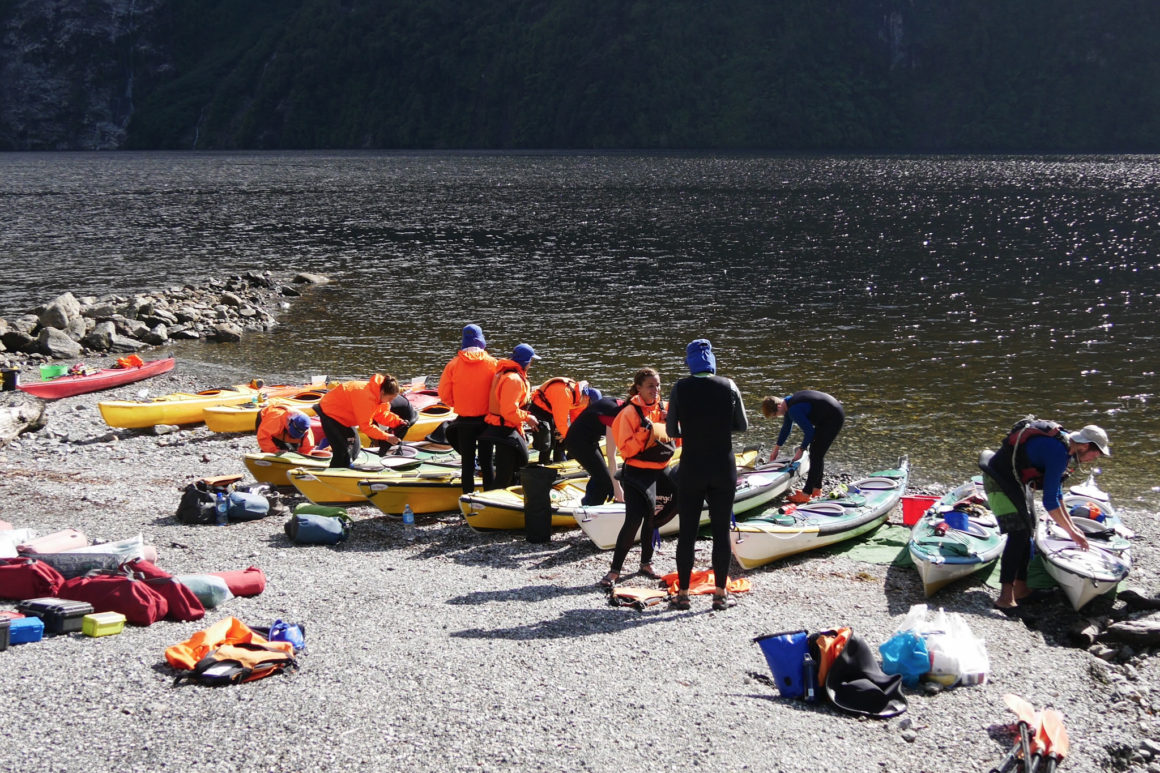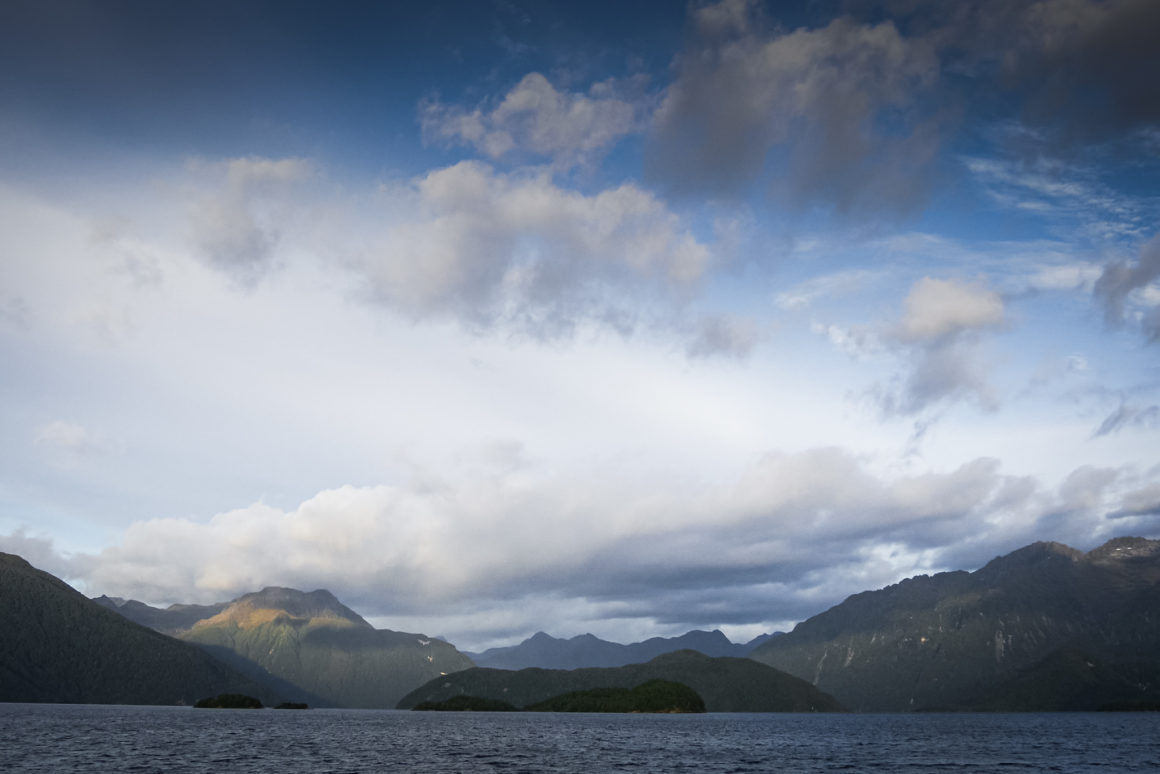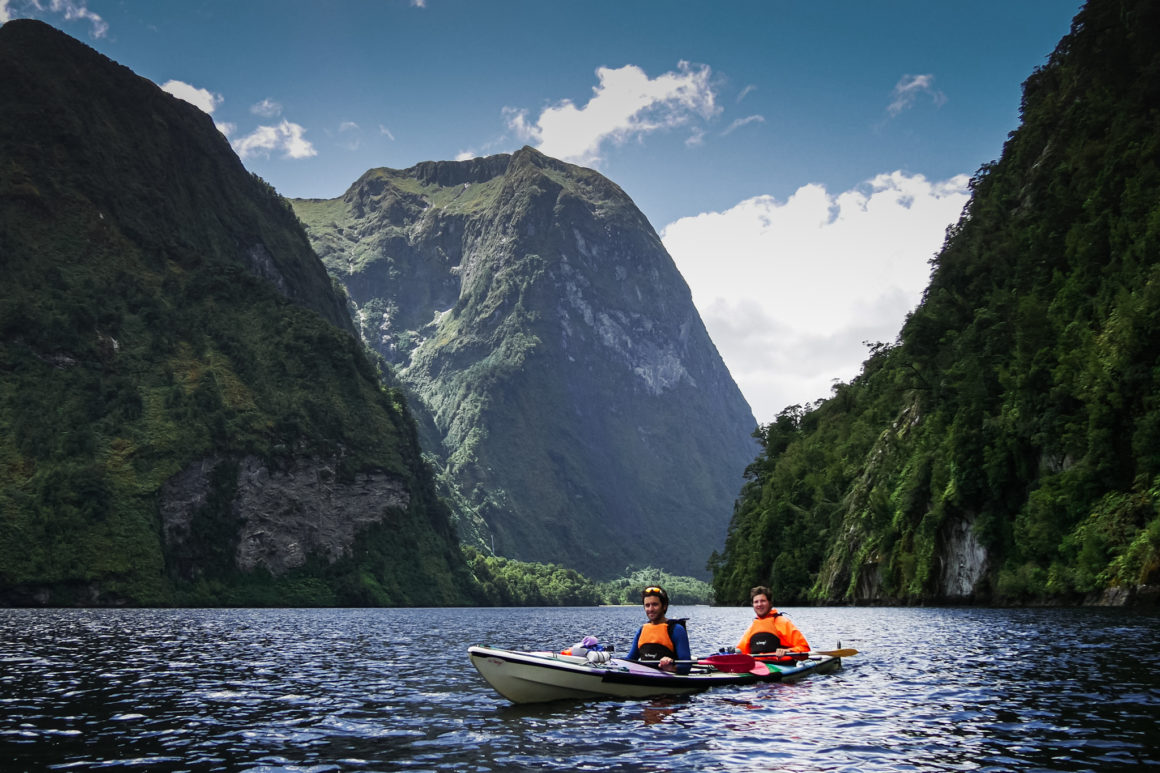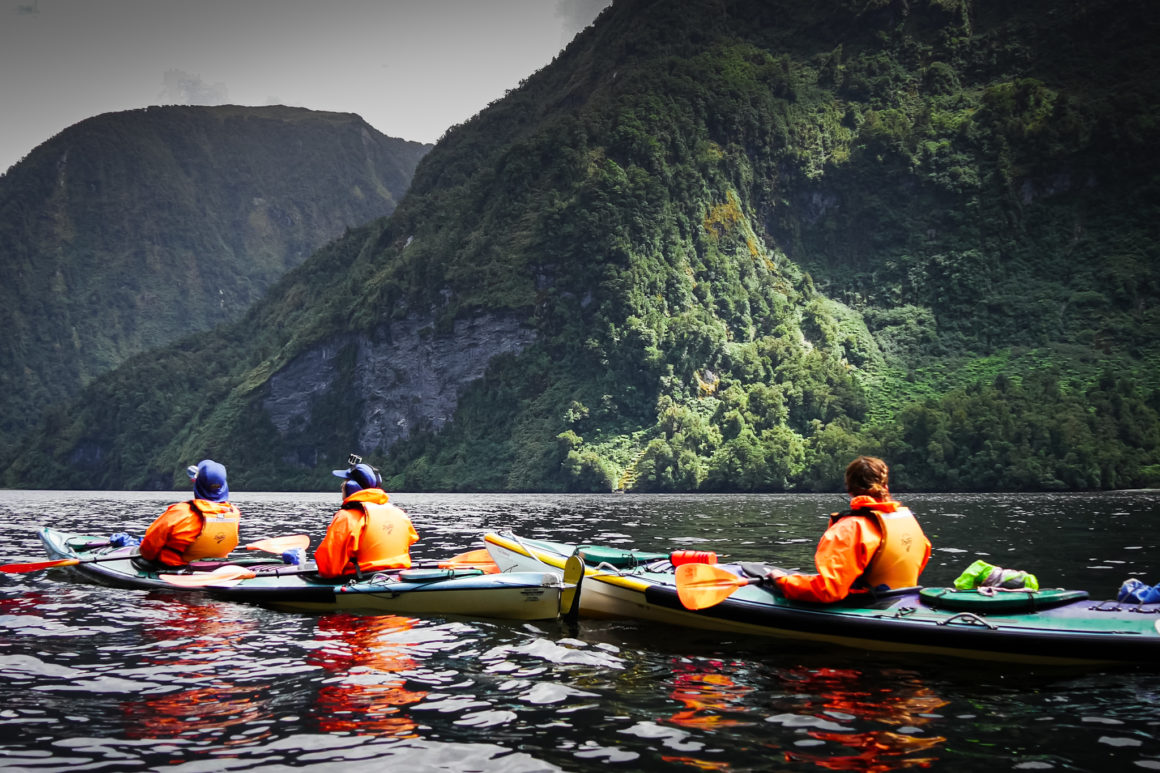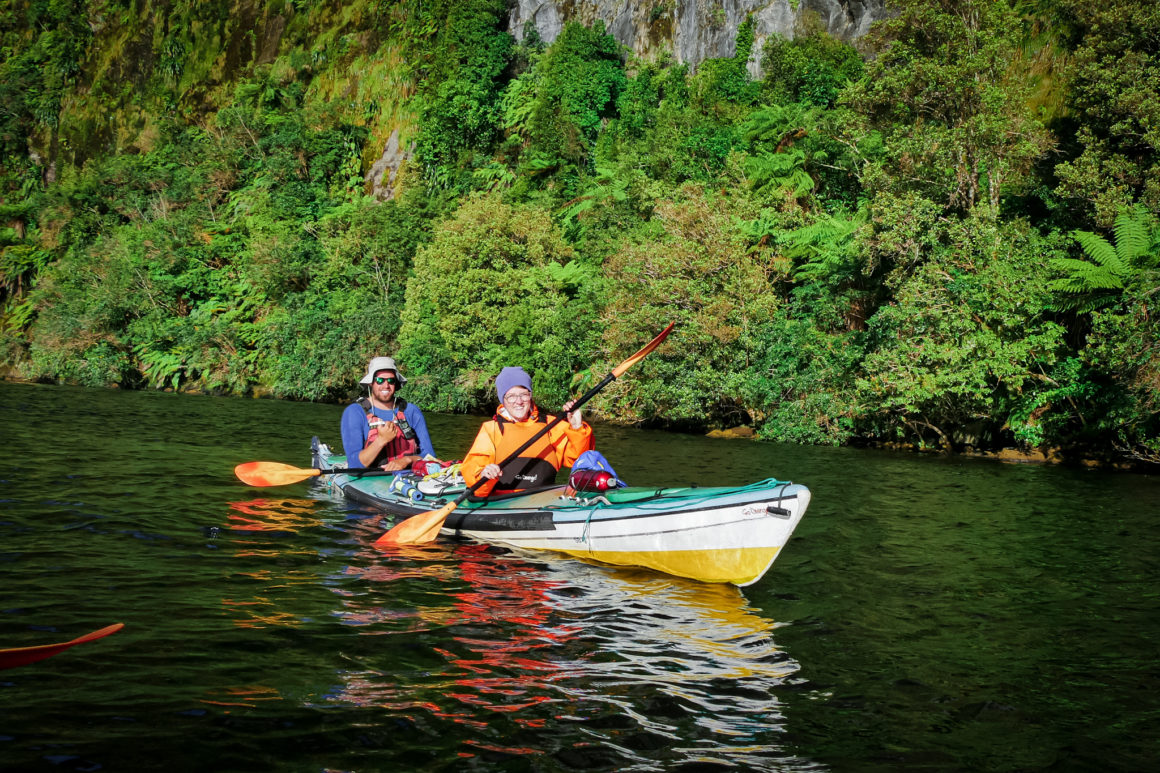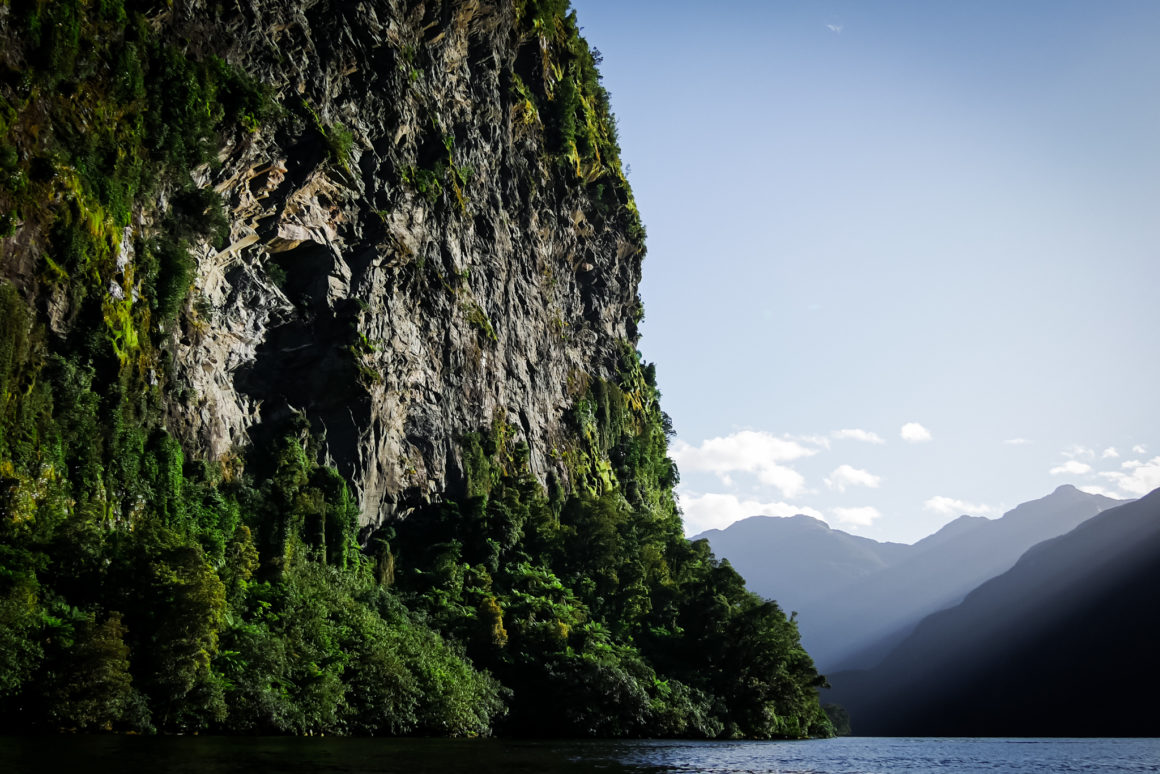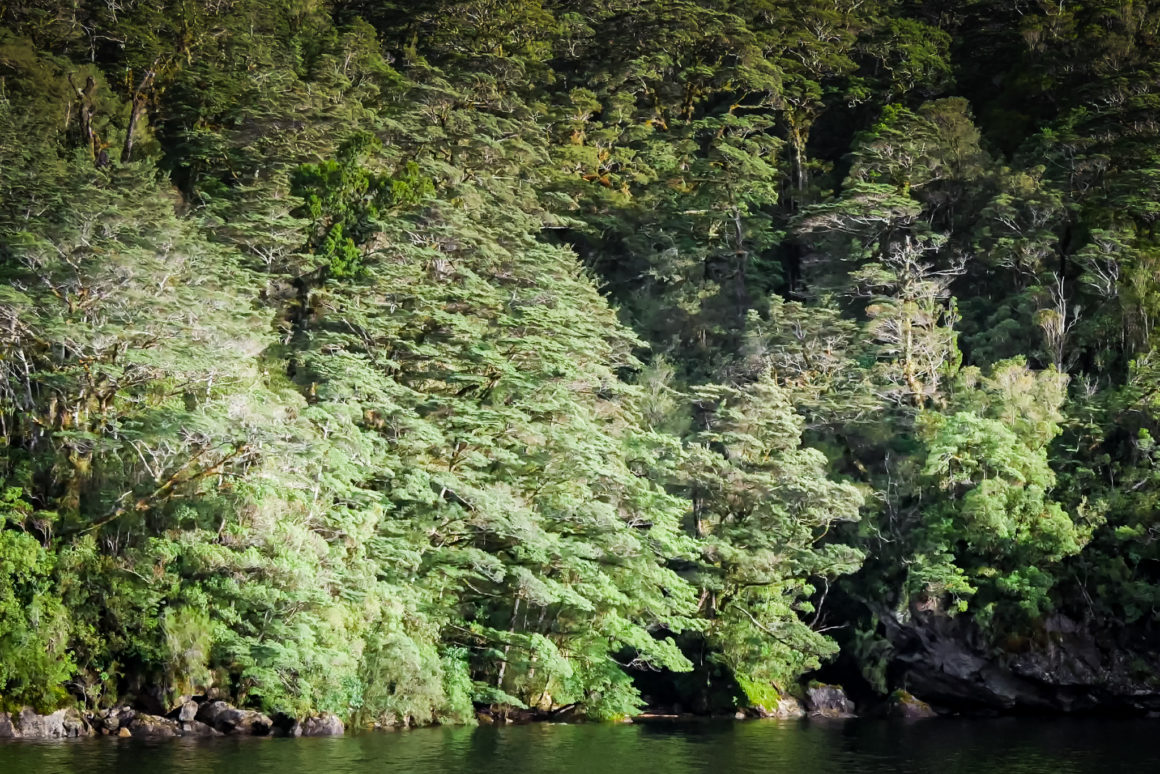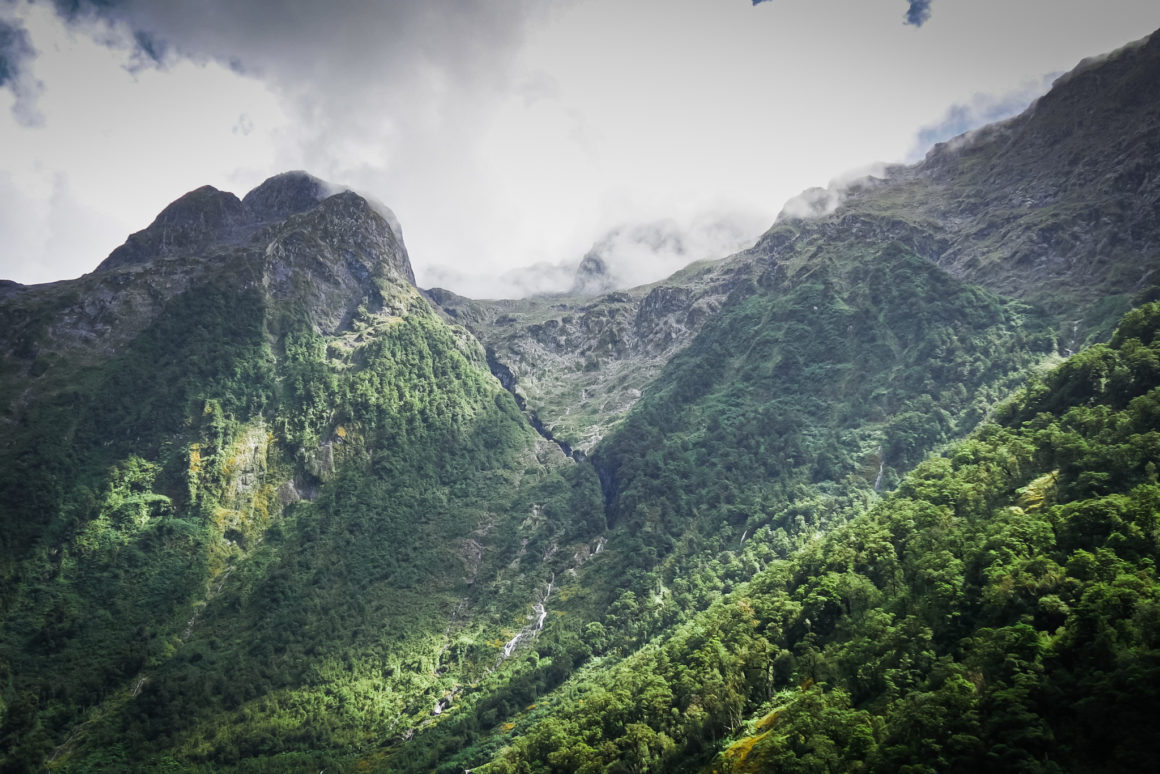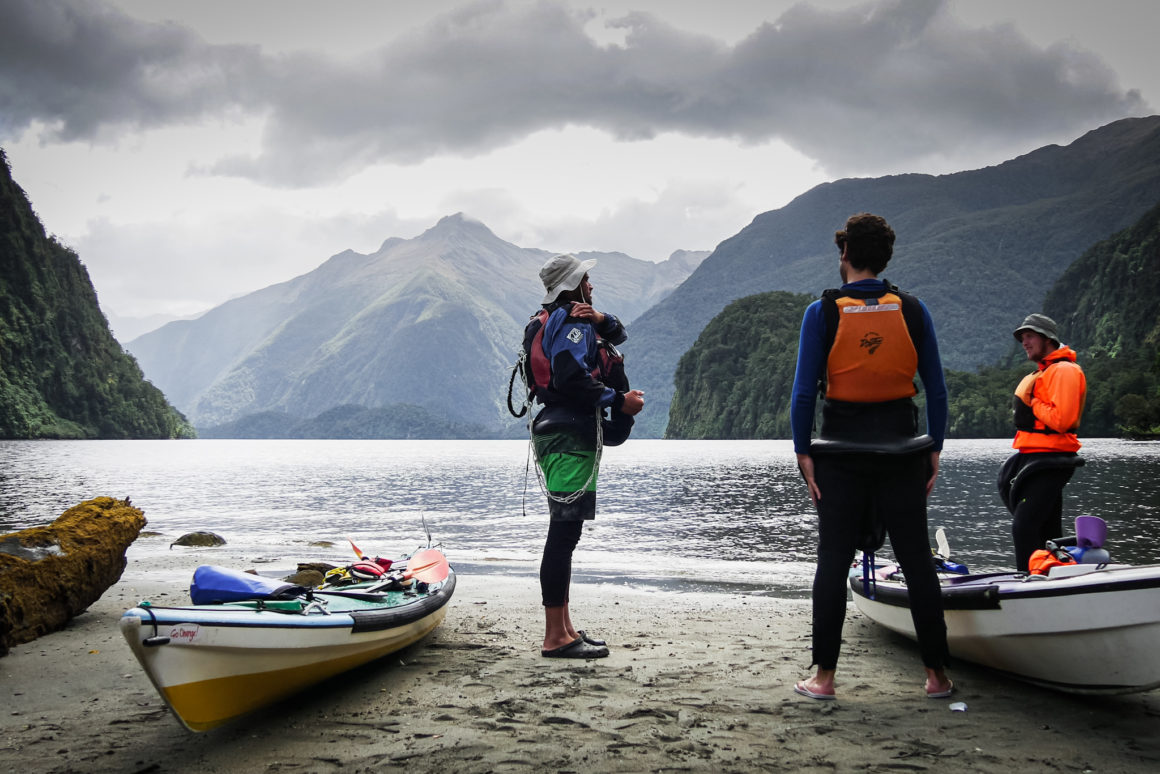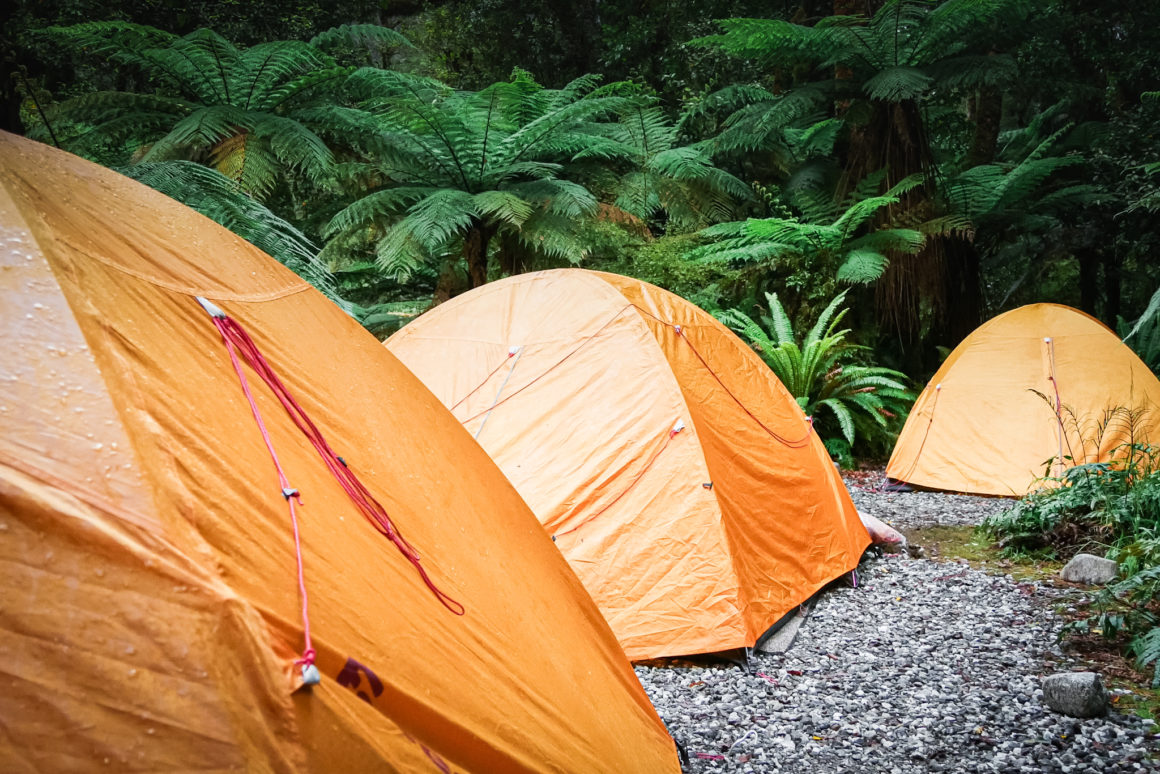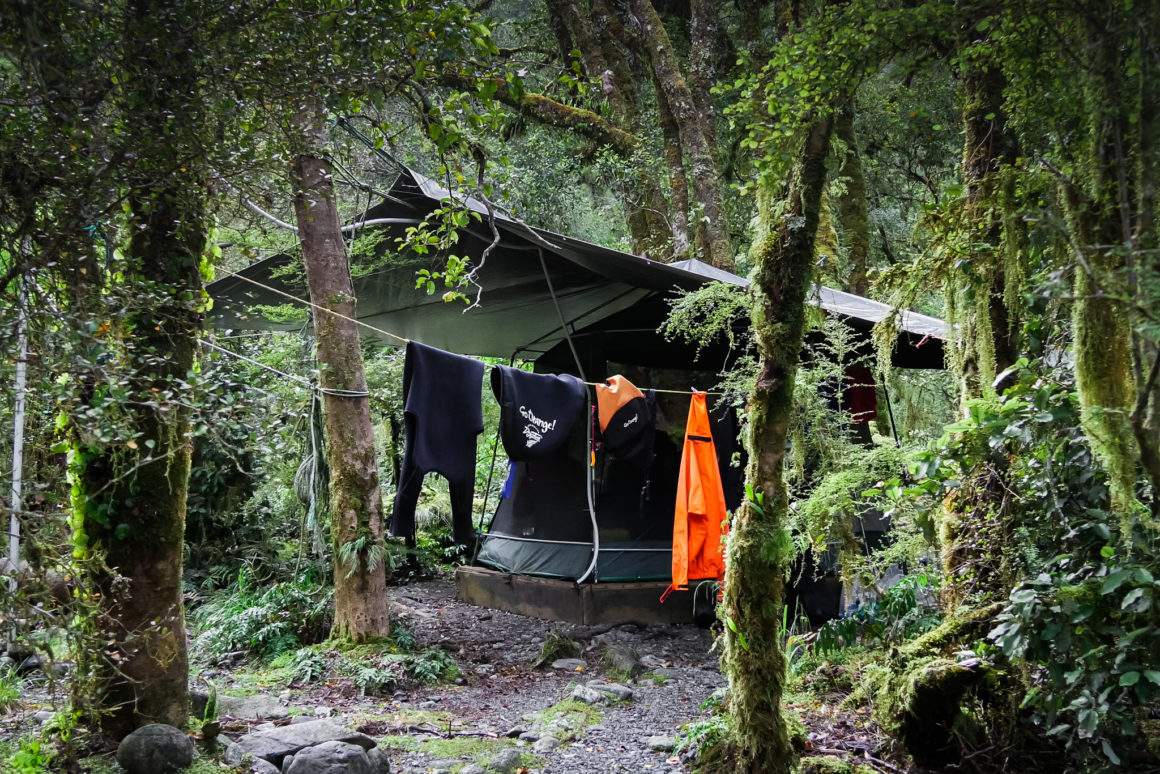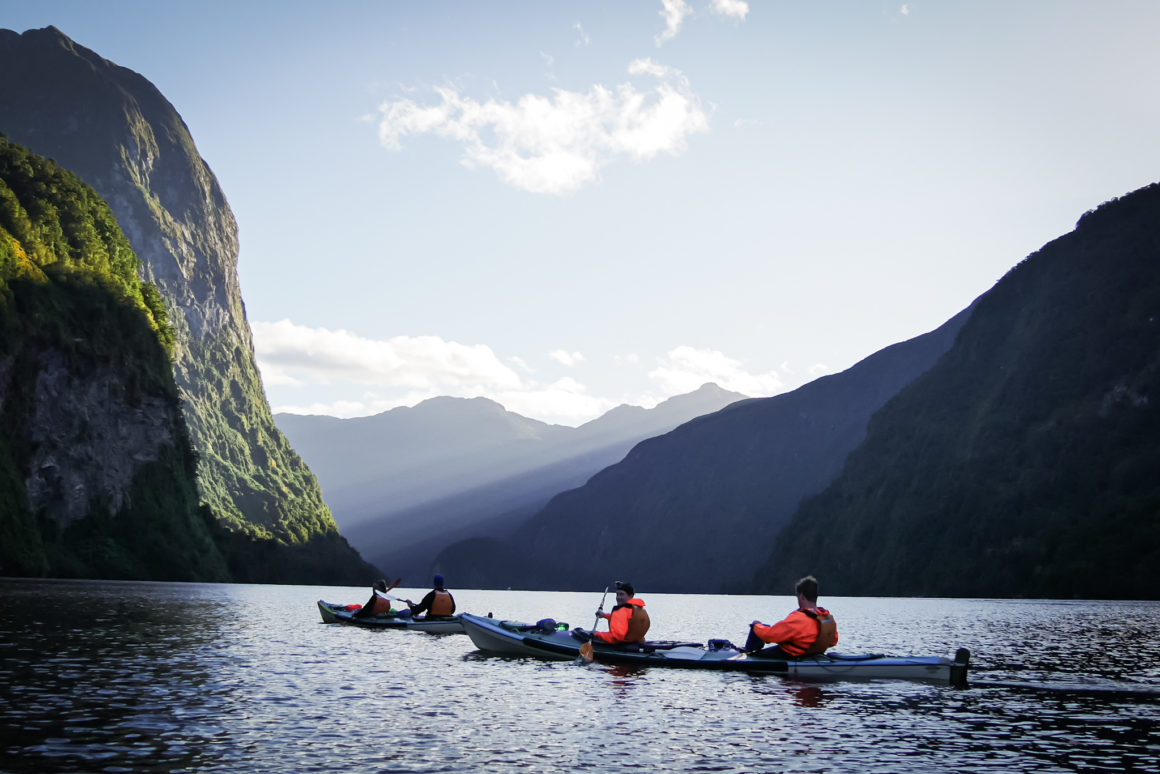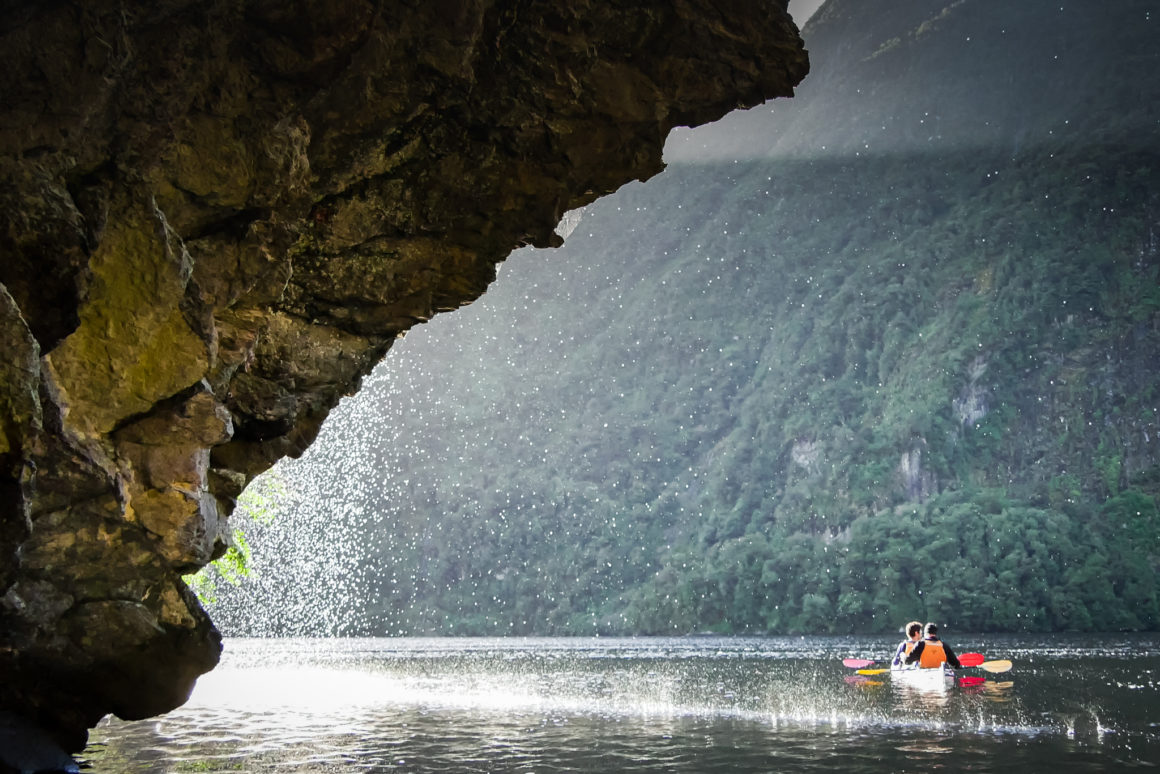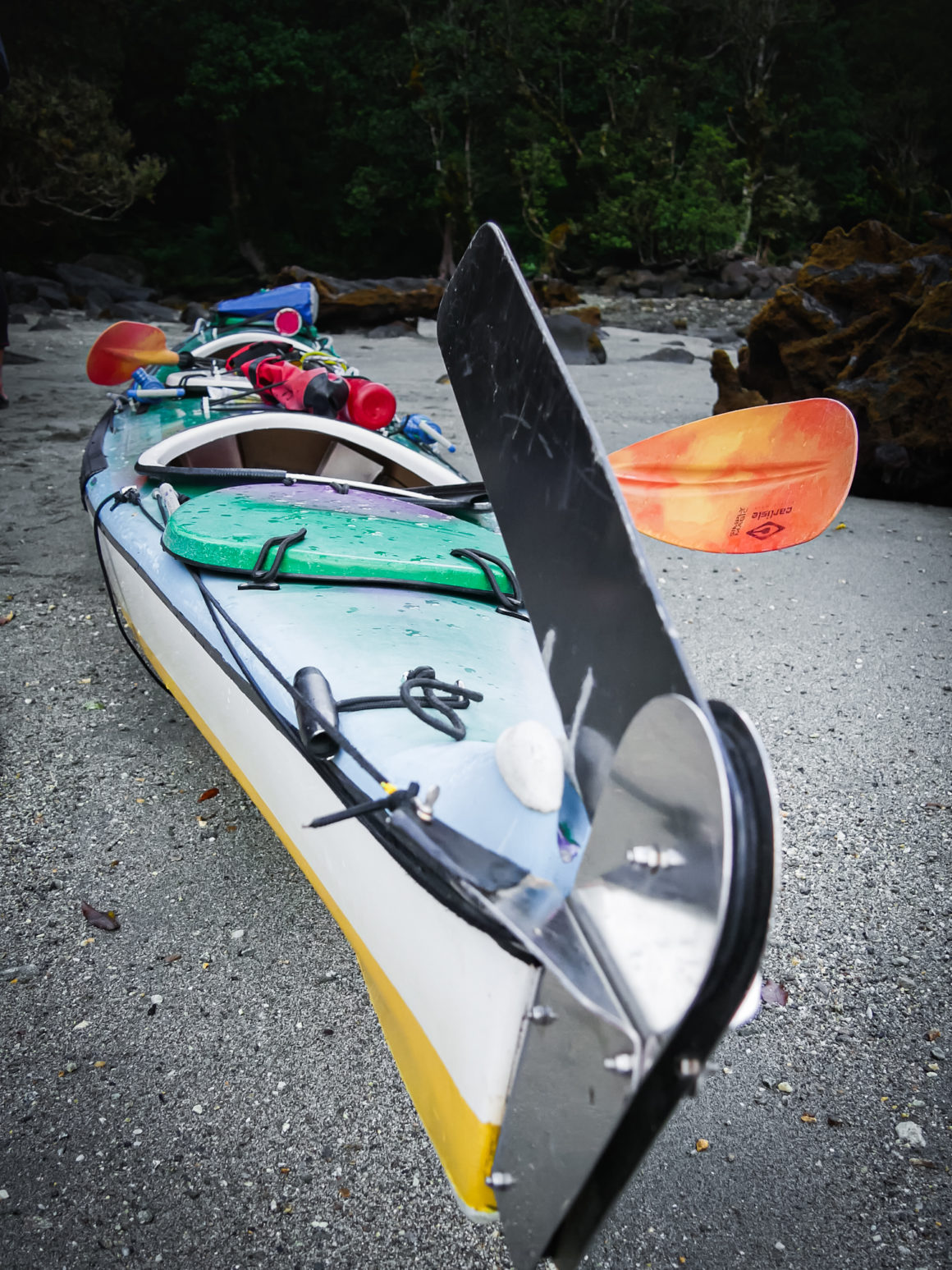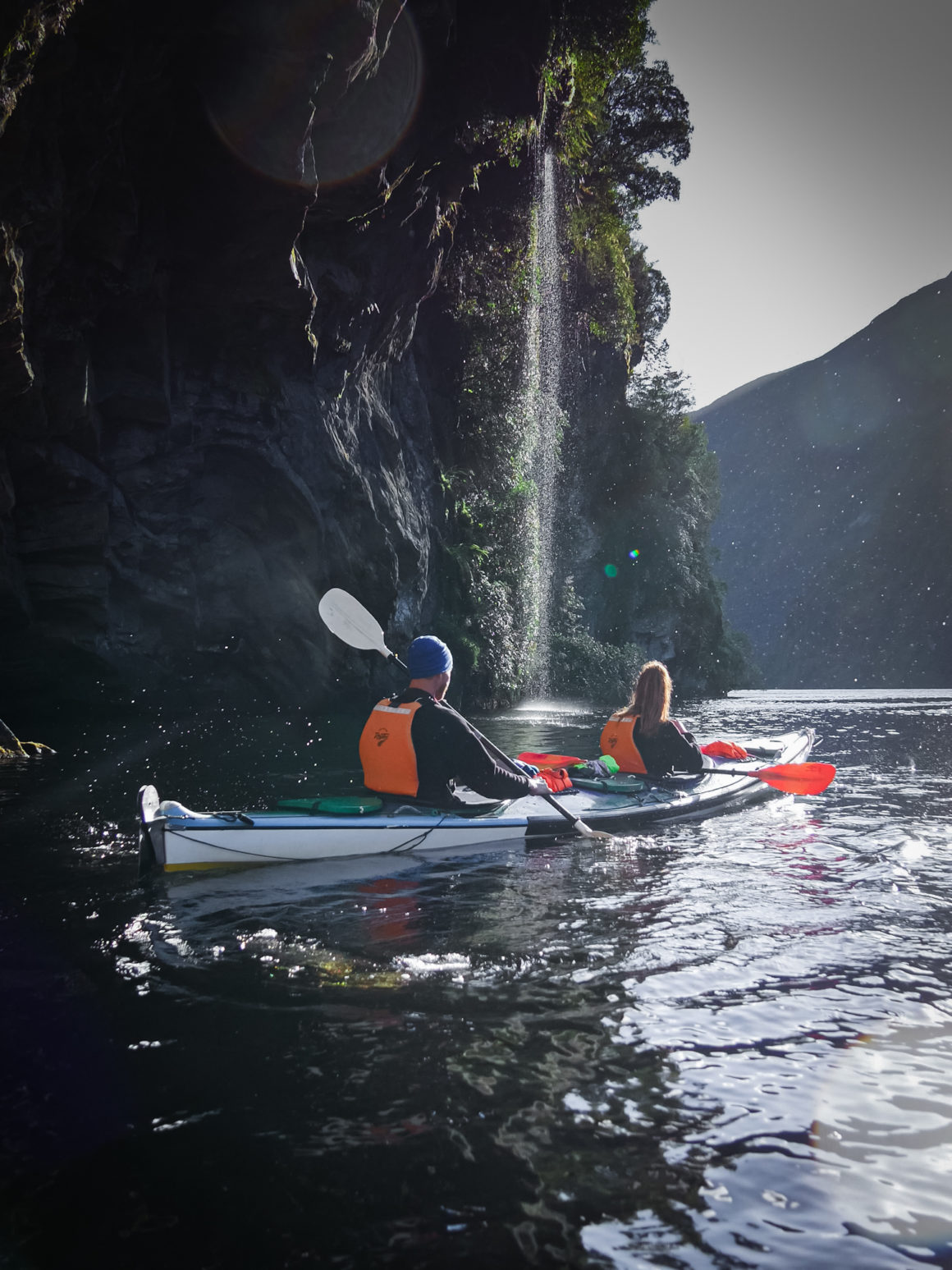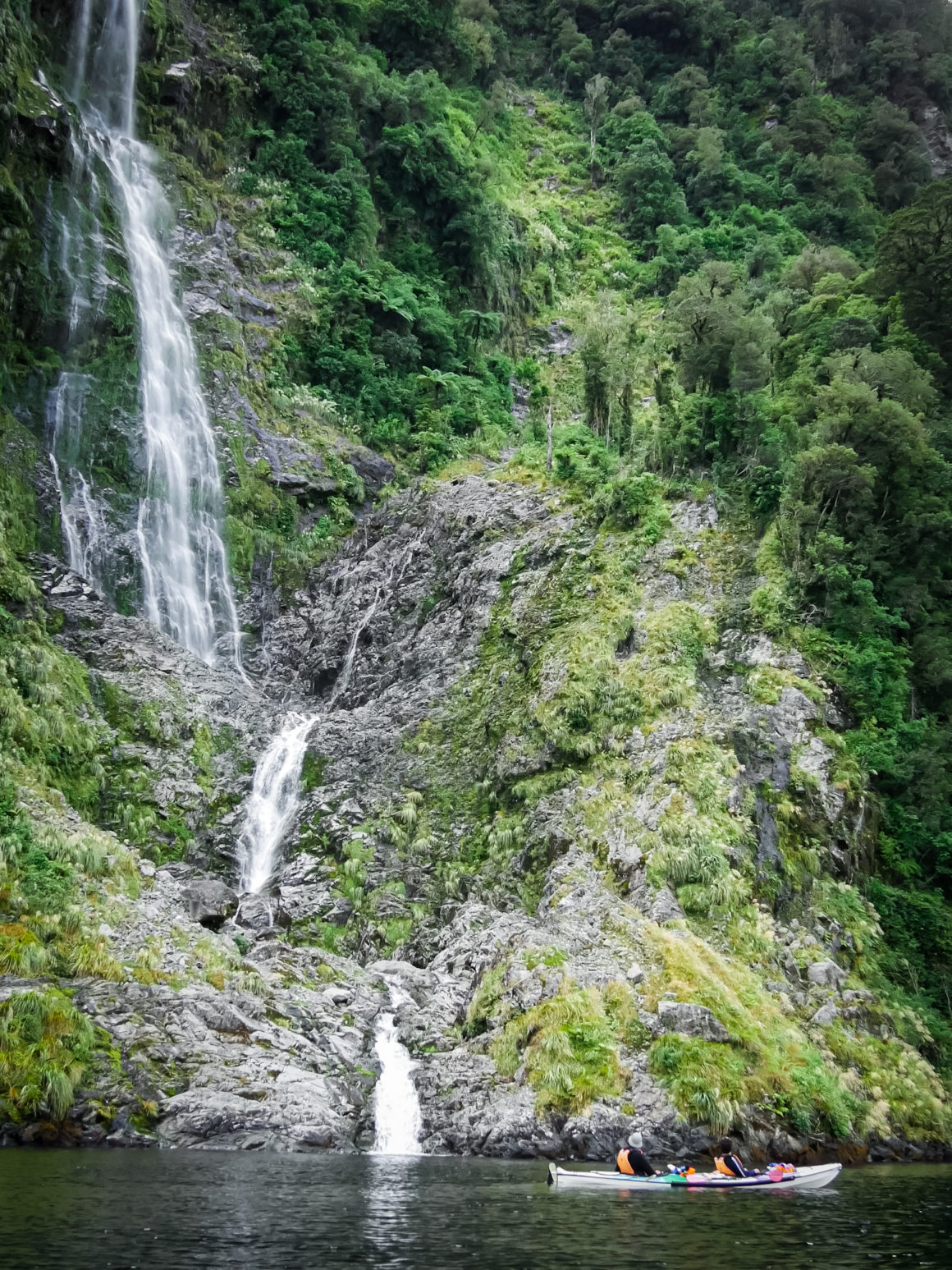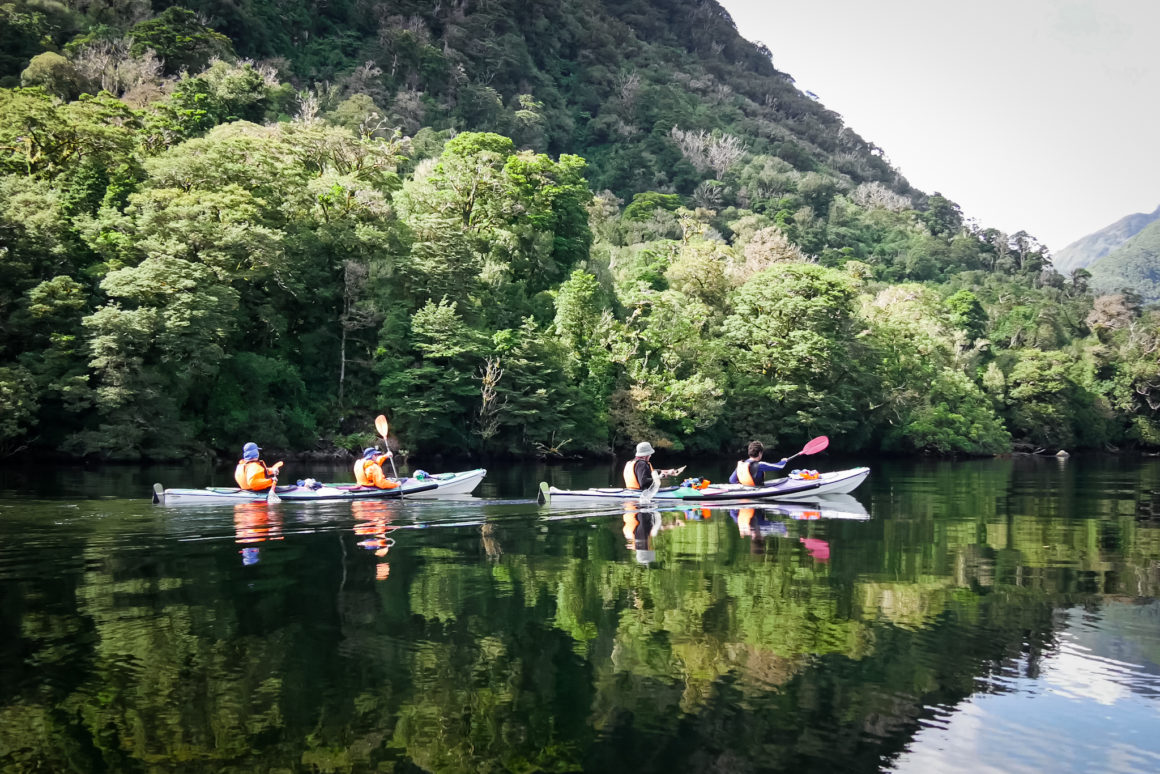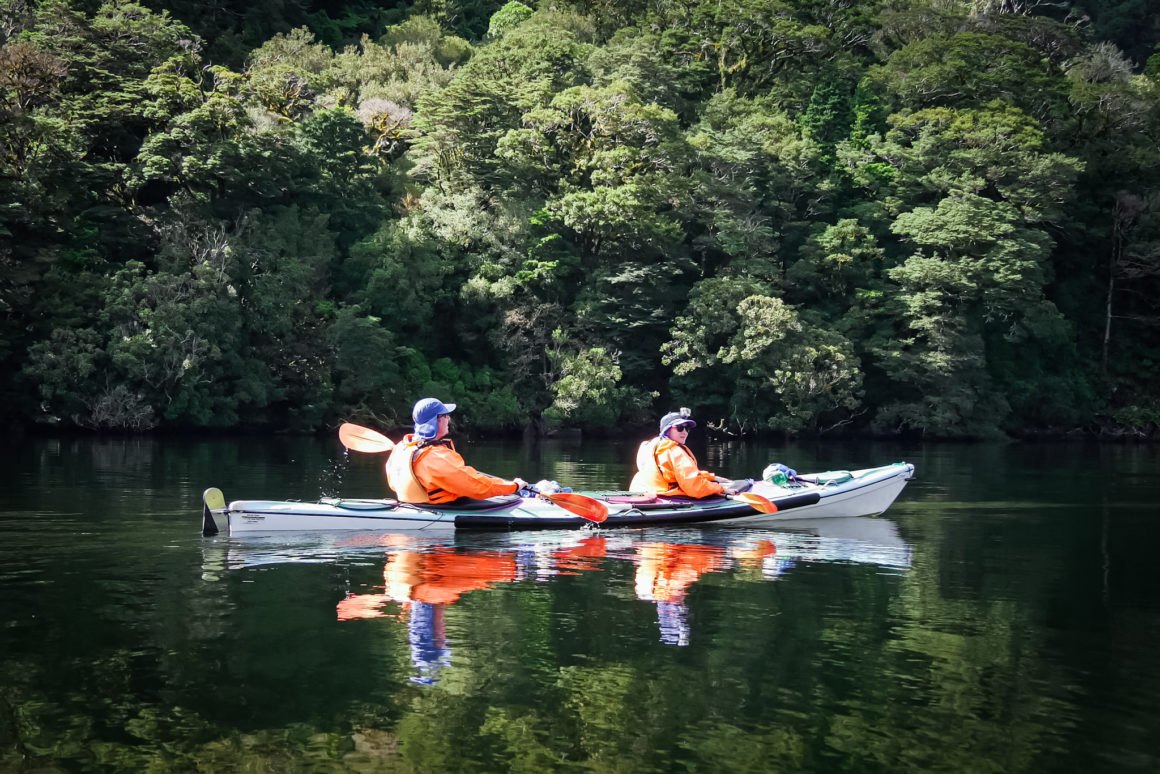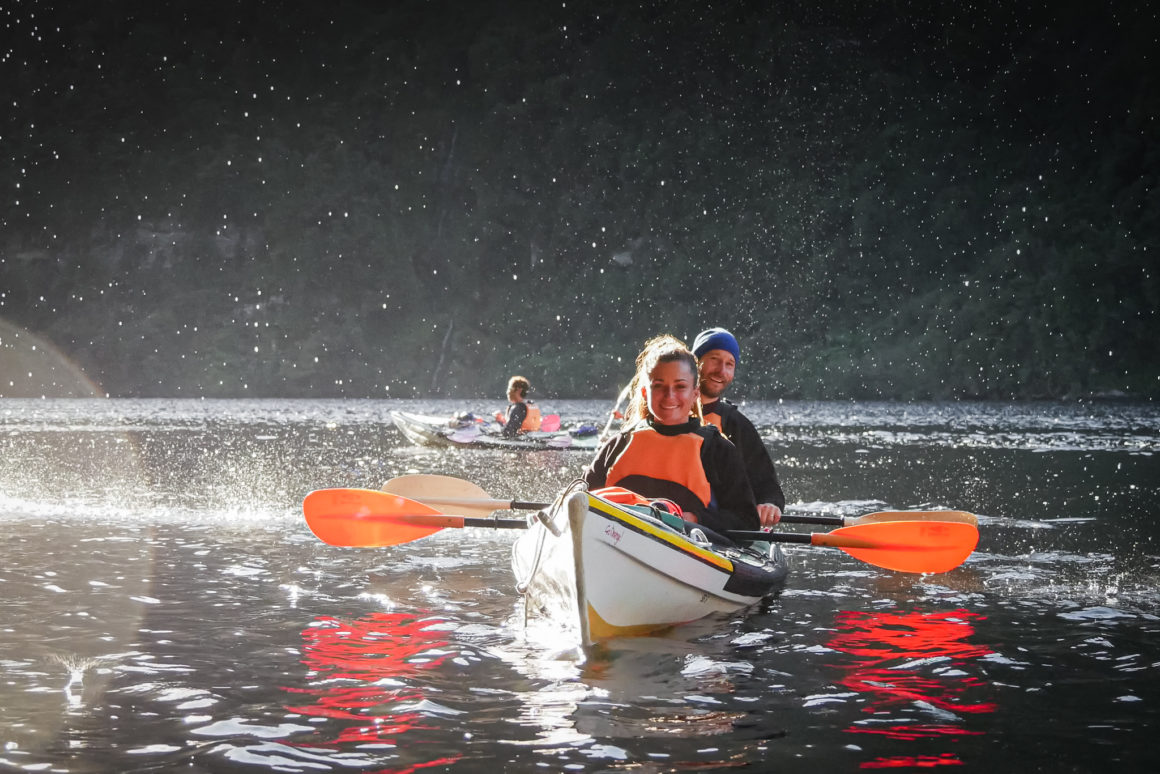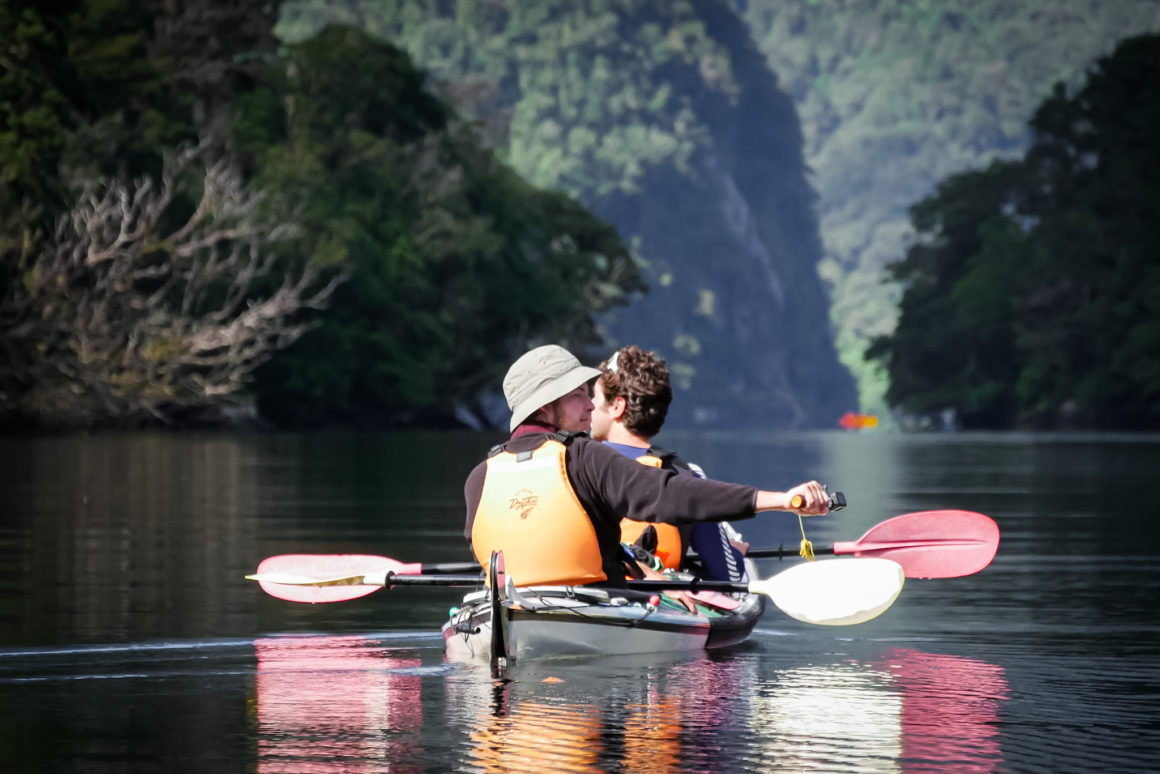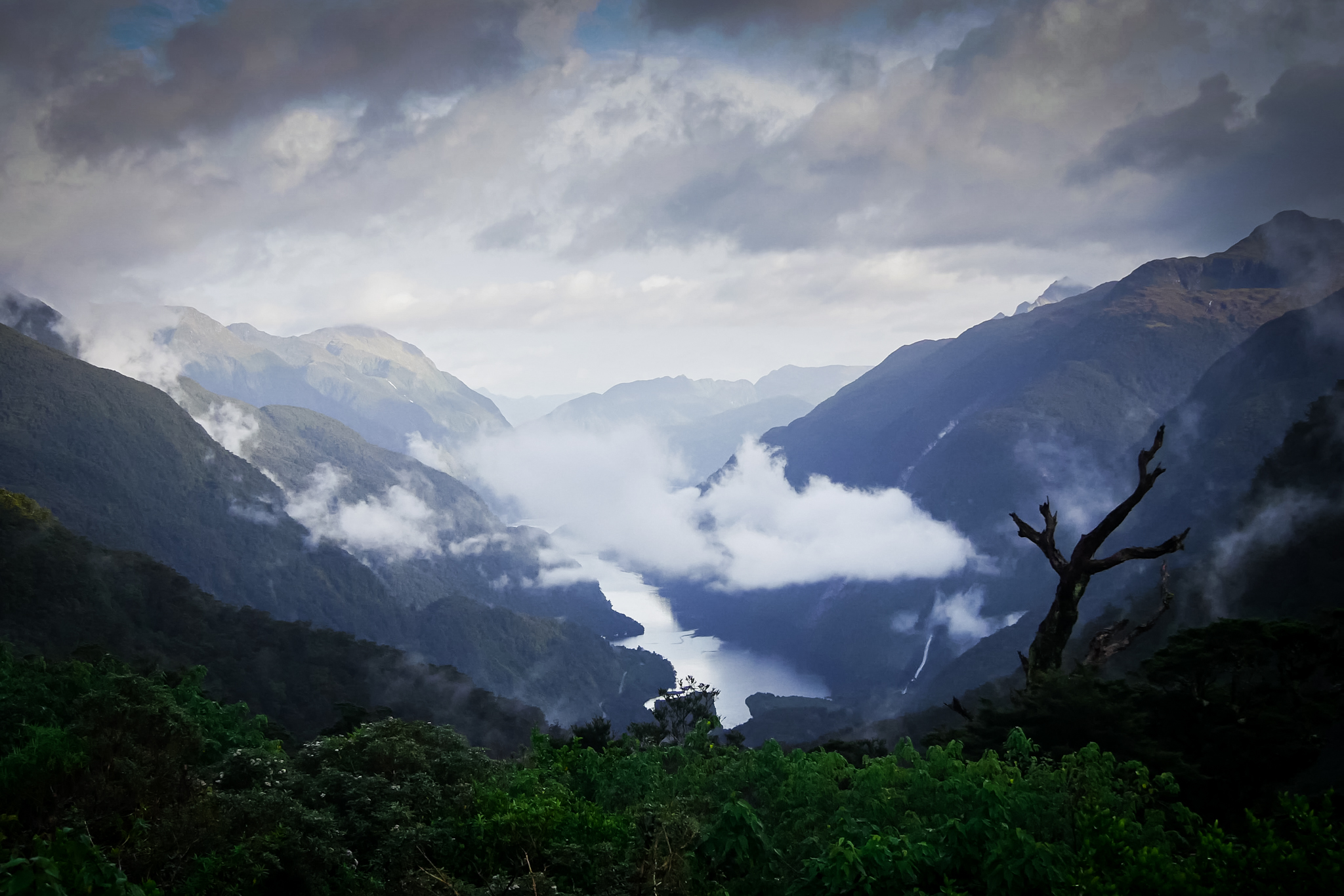DISPATCH
Time has passed in Te Anau and here I am at the end of January 2017. A new year has started. I still have a few days of work at Te Anau Lakeview Holiday Park and at the Kepler Restaurant before hitting the road. Four months in Fiordland already. With its ups and downs but still a breathtaking landscape. I have not had the opportunity to return to Doubtful Sound since my short visit last September and that saddens me a little. For my last few days in the area I therefore decide to offer myself a crossing of Doubtful Sound in a Kayak. Located on the southwest coast of the South Island, Fiordland is a gigantic 12,120 km2 national park, making it one of the largest in the world. The park is made up of steep mountains, deep lakes and many fjords, the best known of which are Milford Sound and Doubtful Sound. Doubtful Sound located west of Manapouri, some 20 km from Te Anau is one of the largest fjords in the region. Relatively difficult to access, it is therefore less visited and still retains a mysterious, calm and wild atmosphere. The sound was discovered by James Cook in 1770. Not being sure of its practicability, the explorer named the place Doubtful Harbor, which means “uncertain” or “doubtful” in English.
The company Go Orange offers daily expeditions and crossings of 2, 3 and 5 days. I let myself be tempted by the two-day expedition. To reach the fjord from Te Anau, a bus picks me up at dawn to take me to Manapouri, about 40 minutes away by bus. This is an opportunity to see the sunrise. At the small town’s pontoon, all participants embark on the same boat, whether kayakers for one day, two days, five days or people who have chosen the day cruise. A good hour’s boat trip across Lake Manapouri allows me to embrace the grandeur and beauty of the lake. The boat docks at West Arm at the end of the lake where a bus is waiting for us to take us on a small gravel road through the mountains. Passing Wilmot Pass where the view of the fjord has not changed since the last time I came and arrival at Deep Cove, the beginning of the fjord.
Apart from a small inn and the hangars of tourism companies, there is no accommodation in the fjord. Our guide, Matthew, half Maori, half German, explains the safety instructions and provides us with the equipment and information necessary for kayaking in the fjord and during the expedition. Around the company hangar, Wekas (New Zealand birds unable to fly) attracted by food come to rummage through the bags. The groups for each expedition do not exceed eight people and the atmosphere is good. Matthew gathers his group, organizes us in groups of two and we equip our boat. Tents, camping gear as well as spare clothes and two-day food disappear in the hatches in the front, rear and middle of the kayak. Launching and departure in the main arm of the fjord. The weather is magnificent, sometimes covered by large cloud masses.
Paddling in the fjord is an extraordinary experience. At the water’s edge, I feel very small, dominated by the grandeur of the mountains around and the mysterious power that radiates from the place. I calmly paddle helped by Matthew’s strong arms seated in the back. The other groups gradually disappear in the vastness of the fjord. Cliffs covered with New Zealand beech plunge straight into the water. After three hours of kayaking, we leave the main arm to sink into Hole Arm where a tiny beach serves as a lunch break. When I set foot on the small tongue of sand, I feel like an explorer of the past discovering a new continent. The weather is typically “Fiordlandien”. Mix of rain and sun which gives the place an incredible atmosphere. We take our things out of the kayak storage compartments. Everyone swallows their little snack to regain strength for the afternoon. Sandflies (half mosquitoes, half vampires) are not far away but the presence of the sun seems to keep them at a distance. These tiny gnats love rain and moist atmospheres.
The hours pass quietly to the rhythm of our paddles. The place is so big that I feel like I am standing still. Four hours later we reach the end of the arm and return on our steps to find the campsite located in the middle of the arm, just by the water. A small permanent shelter with mosquito net awaits us. We take the kayaks out of the water (hard thing to do when they are loaded) and then pitch the tents. A torrential rain suddenly falls and clouds of sandflies rush over us. This is the race to escape them. Then as quickly as it appeared, the rain disappears and calm returns. Quiet evening chatting with the rest of the group under the shelter then a good night’s sleep.
The next day we witness a splendid sunrise, which bathes the landscape with bluish reflections. The water is perfectly calm. I am really lucky to have such a perfect time. This is rarely the case in Fiordland, where it rains most of the time. Many kayak expeditions take place in the rain on rough waters. The return is made by the same path. My arms are a little sore, not been used to paddling. We return to the main arm, visit the corner a bit and then leave in the opposite direction. Deep Cove appears around noon and we disembark, tired but happy with the adventure. A bus brings us back to Te Anau in the early afternoon. I reluctantly leave the fjord. The places are so beautiful. This is the first time I have been kayaking and I really liked it. Feeling so free on the water, dock ing where I want, accessing places inaccessible on foot … The two days went by far too quickly and I would have stayed a few more days. But it is like that. It will be for next time. I leave the place happy to have been able to enjoy Doubtful Sound in such perfect conditions.


